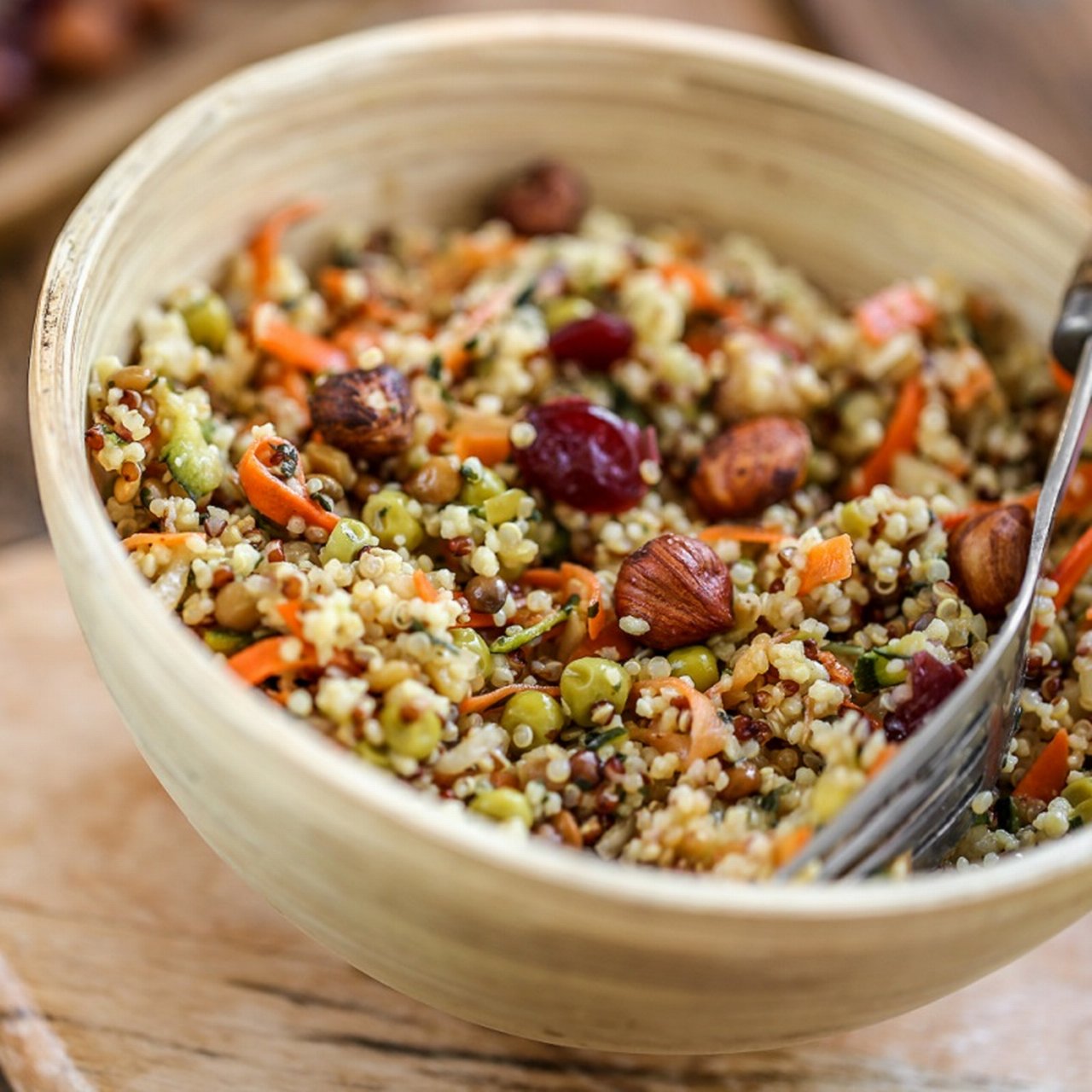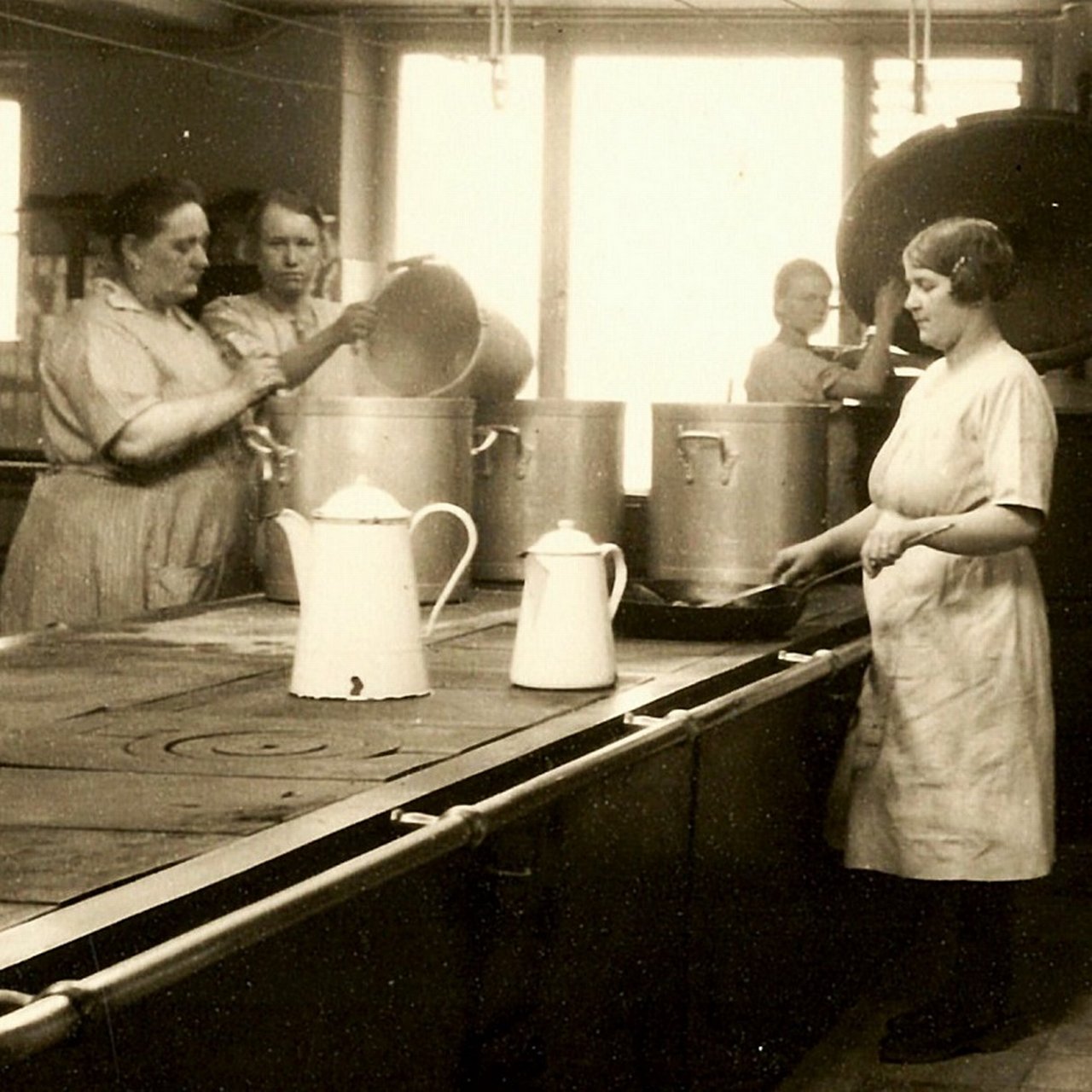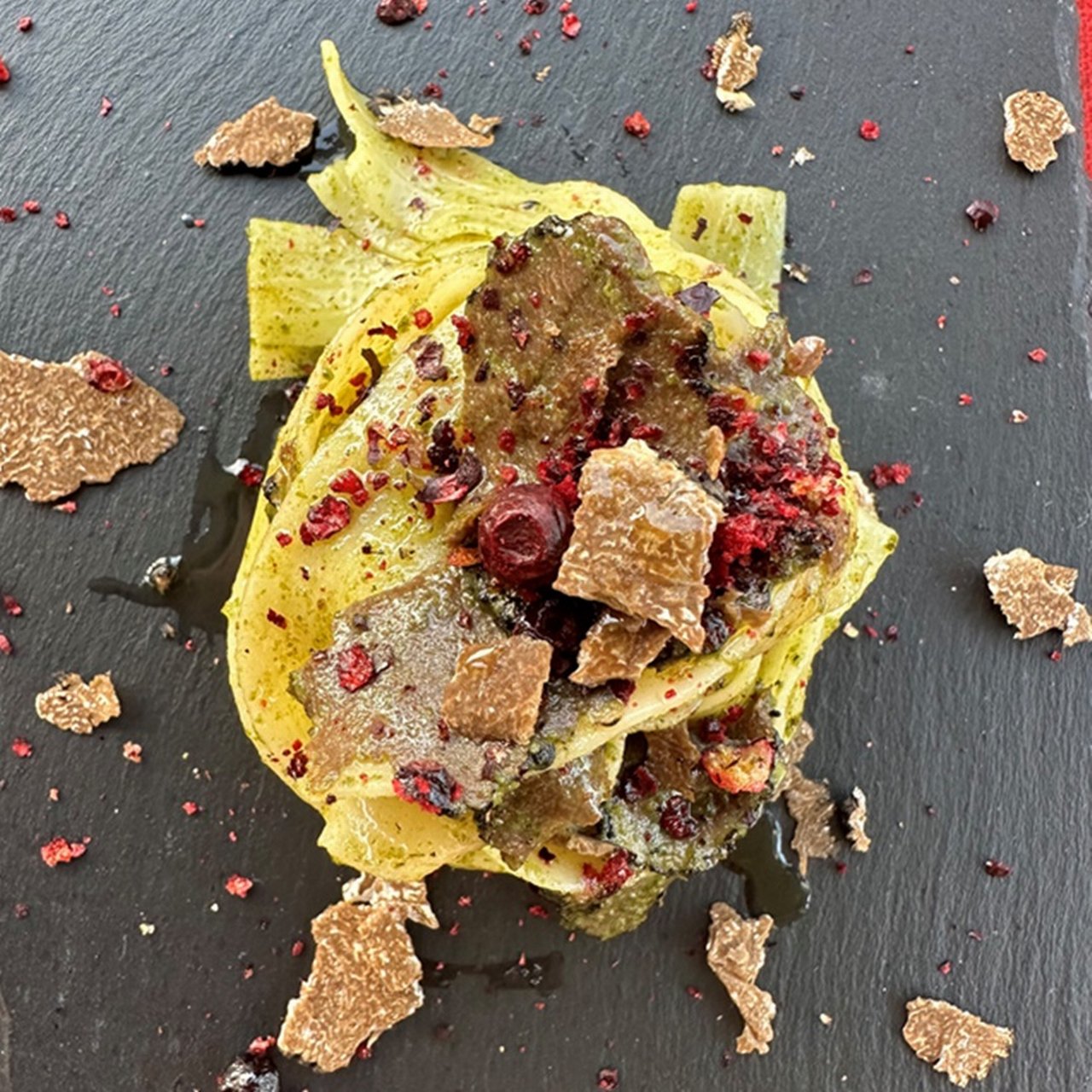
Conscious consumption
Whether new habits or established rituals: Our colleagues provide insights into how they approach nutrition and show how diverse conscious eating can be.
Eating is about more than just filling your stomach. Many of our employees are concerned with eating a varied diet and healthy meals. We asked them what and how much ends up on their plates. Join us on a journey of conscious nutrition, from ancient grains to rapeseed blossom, from Lord of the Rings-inspired menus to homegrown rocket leaves and the healing power of fasting.
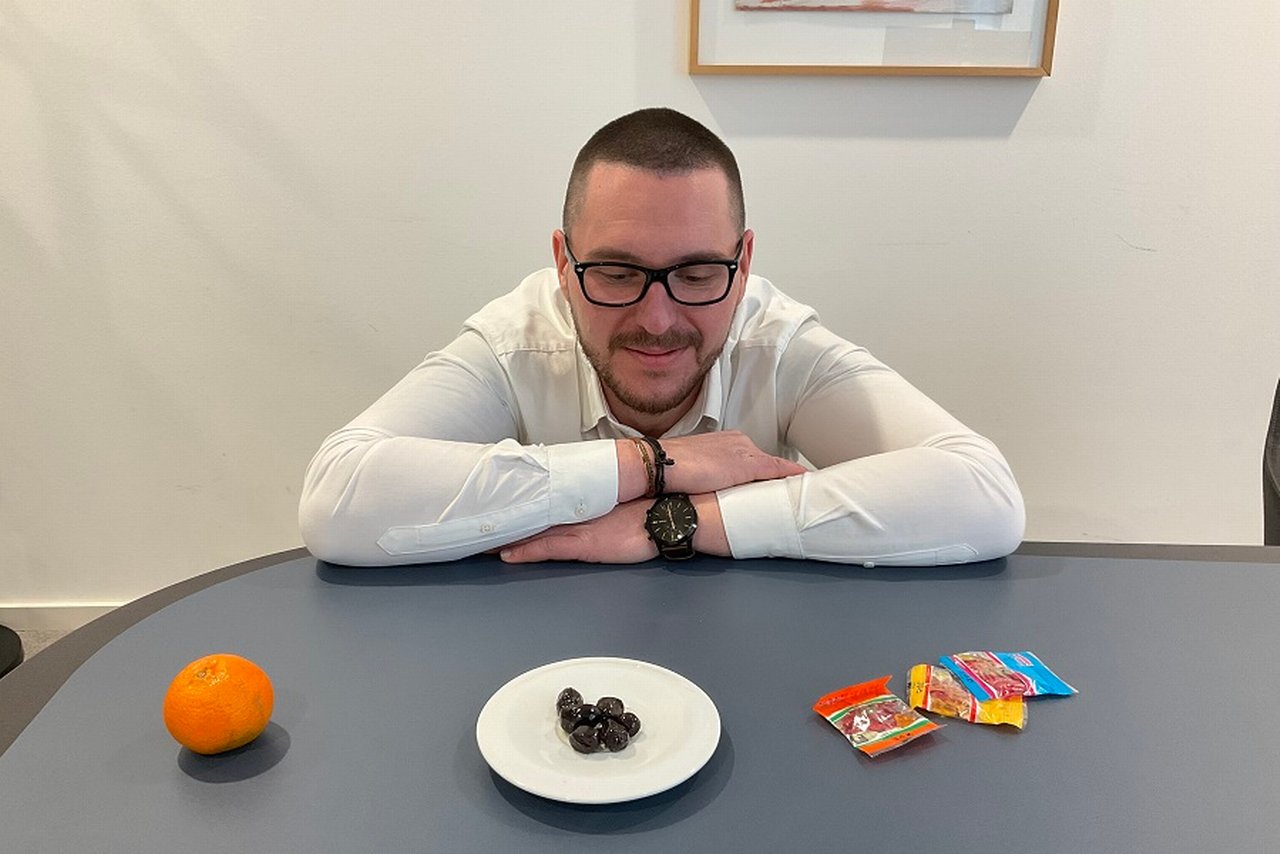
After a long journey, Yul found out what really works for him
“My diet was catastrophic before I started my apprenticeship at the bank in 2013,” recalls Yul Peter, Head of the Customer Service team at our Private Bank in Braunschweig. Fast food and processed snacks dominated his everyday life, be it a second lunch of fries and ketchup or a bag of crisps and two bars of chocolate in the evening. “I’d even eat a whole frozen cheesecake in one sitting,” Yul admits.
“One day I saw myself in swimming trunks in an old family photo and was shocked at what had become of me,” he recalls. It was a moment that changed his life. “At one point I weighed 138 kilos. Today I’m back down to 83.”
Yul played as a goalkeeper in the district league and trained twice a week, with a competitive game on the weekend. Nevertheless, he realised that even regular exercise could not compensate for his dissatisfaction with his own body. So he decided to make a fundamental change to his diet, starting with more awareness.
He became particularly interested in the topic of intestinal health after reading a book on the subject by German bestselling author and doctor Giulia Enders. Since then, his gut health has played a central role in his everyday life. In the mornings he eats a piece of raw ginger and an apple; most evenings he’ll have some courgette, romaine lettuce, chicory or cucumber. He and his partner rarely eat out, once or twice a week at most, and even then try to order healthy alternatives.
One day I saw myself in swimming trunks in an old family photo and was shocked at what had become of me
Like Yul Peter, many of our colleagues are apparentlythinking about questions related to their diet: What's on the table, whether for breakfast, lunch or dinner? How can I eat as healthily as possible? How do I coordinate my meals? How much meat should it (still) be? Where do I find the right ingredients, where do they come from, how sustainably are they produced? And how can I integrate shopping and cooking into my work and family life?
We asked our employees questions like these – whether in Frankfurt or in one of our branches from Rimini to Tokyo. The result: A large, inspiring variety of individual, often regionally influenced eating habits, tips and tricks for selecting ingredients from ancient wheat to homegrown arugula to mace blossoms and the detailed preparation of meals. All the way to an insight into the motivations for permanently changing long-standing eating habits.
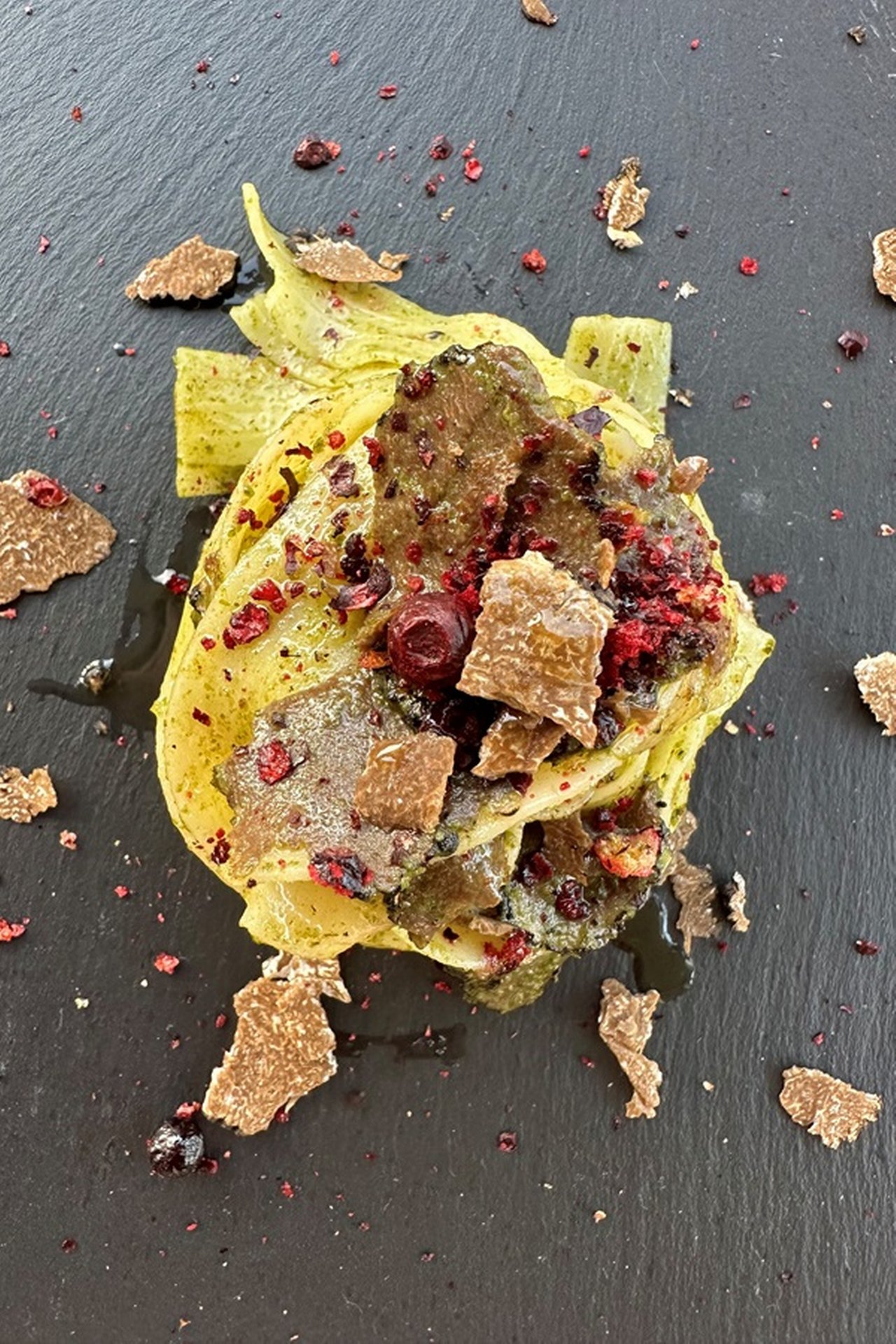
Giulia's gluten-free tagliatelle
Like Giulia Brandinelli from our Private Bank in Rimini, for example. She has been gluten intolerant for several years. She attributes this to the inferior quality of wheat available in supermarkets. That's why she now relies on more digestible and nutrient-rich ancient grains. "This change has significantly improved my digestion and my general well-being," she says.
Daniela Giove, who works in our Private Bank in Naples, has also made a conscious effort for several years now to avoid "all foods that are bad for me and my children". Daniela's main meal is an elaborate breakfast that always includes protein-rich foods and sometimes even homemade bread. Instead of sugary biscuits, there are now mainly homemade cakes, eggs and fresh orange juice on the table. The effect: noticeably more energy.
This not only gives her power for her job and family, but also for cardio fitness training with pilates three times a week. Daniela's healthy lifestyle is already rubbing off on her children; instead of spending hours in front of the TV, or on a computer or smartphone, her 10-year-old son goes to taekwondo and her 14-year-old daughter goes to ballet and modern dance. "It’s possible to make changes," says Daniela, "we are living proof."
Mealtime rituals
For many of our employees, the key to a healthy diet is homecooked meals. Janine Mueller from our Private Bank in Frankfurt agrees, but she also knows how much time it takes – time to shop for the groceries and to prepare the meal. One way she and her family like to combine the need for efficiency with the wish for a healthy meal, is to cook to a theme – for a movie night, for example. They might decide to watch the Lord of the Rings and cook various dishes that match the theme. For an episode of "Bridgerton" they prepare a stylish high tea with scones, or they cook Caribbean food for an evening watching "Pirates of the Caribbean".
“Japan’s food culture places great importance on sustainability, health, and tradition,” says Atsuko Yoshitsugu from the Communications team in Tokyo. She likes to let the seasons guide her: “We attach great importance to seasonal ingredients,” she says. In spring, for example, she uses bamboo shoots, rapeseed blossom, spring onions, spring cabbage, or freshly caught fish such as snapper, bonito, or Spanish mackerel. And when it comes to fruit? “Definitely strawberries.”
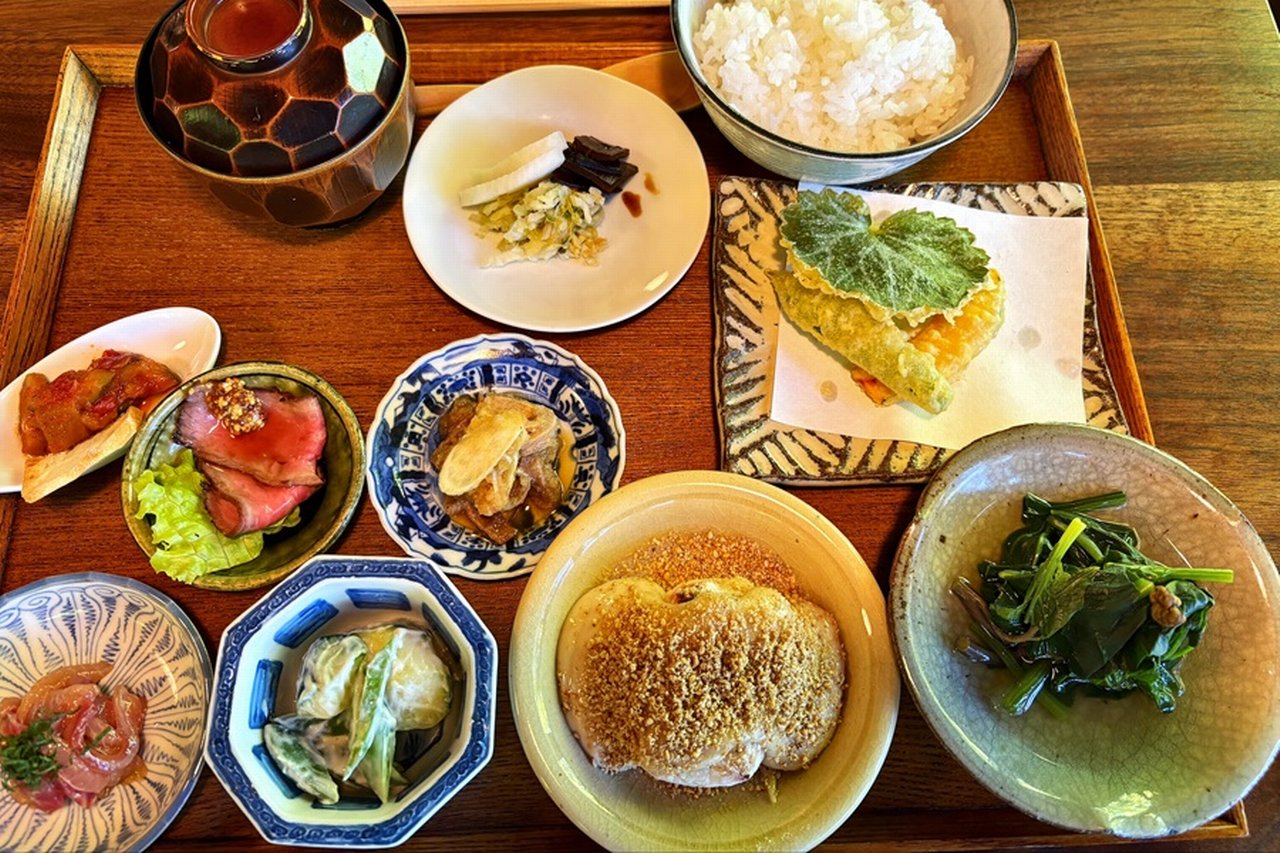
Atsuko shows us how to lunch in Japan
Food is not just about daily sustenance for Atsuko, though; it is also an expression of cultural and emotional connection. Even in hectic households, people consciously pause for meals. Before eating, they say "Itadakimasu," which means "I humbly receive" or "I gratefully accept the life of plants and animals," and after eating, "Gochisousama," which means "Thank you for the delicious meal" – an expression of appreciation for the cook or host.
Such established rituals make eating in Japan more than just a meal. Atsuko says food helps to structure everyday life; it creates conscious moments of mindfulness, and connects people. She herself manages to integrate this food culture into her everyday life through conscious choices, seasonal cooking and preparing meals together, creating peace and balance.
Conscious and sustainable
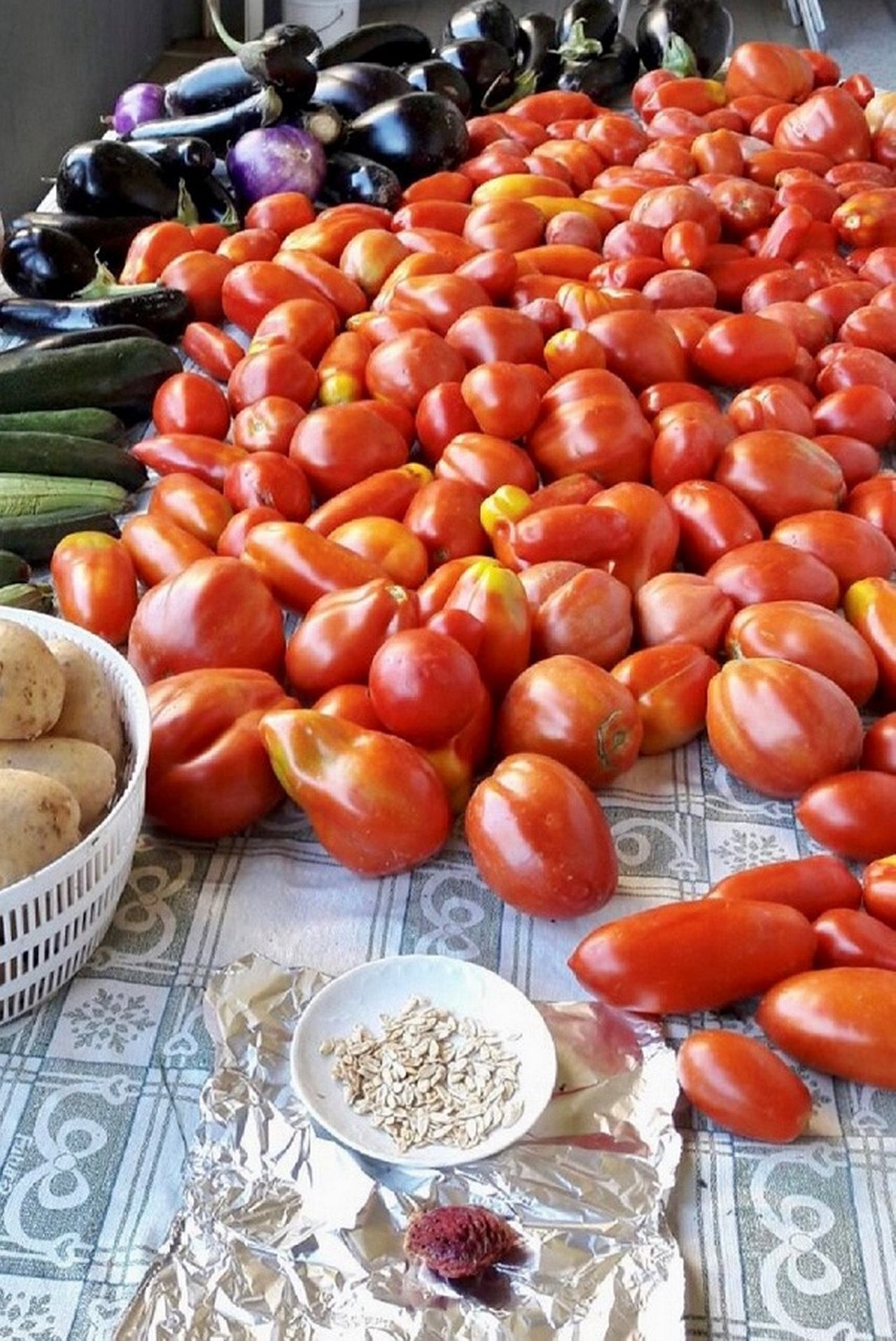
Lucie's family grows tomatoes on about 500 square metres
Lucie Placella, who works in the Chief Operating Office in Switzerland, also relies on tradition. Her family has been growing organic tomatoes for decades in the small town of Granges in the Swiss canton of Valais, on a plot of land about 500 square meters in size. With around 300 days of sunshine every year, they produce around 150 litres or 250 to 300 bottles of tomato sauce annually. Not for sale, but for their own use – a family heirloom that Lucie and her sister took over from their parents, who started growing in the 1970s.
"Our tomatoes are the basis for almost all our everyday recipes - we add tomatoes to practically everything," says Lucie. Her favorite dish? The classic: Spaghetti alla Bolognese. Since the tomatoes have a long shelf life, there is always a supply on hand.
Food with a short shelf life is something that Tanja Kiessling, a data protection officer at DWS, focuses on. "I buy almost exclusively through the Too-Good-To-Go app," she says. It often means having to use the fruit and vegetables she buys very quickly. "But that saves food, brings variety to what we eat and saves money."
High-quality food at acceptable prices? Iris Niederheide from Compliance in Frankfurt knows how that works. She is a member of "Die Kooperative", a cooperatively organised initiative in Frankfurt-Oberrad. Its members receive a box each week containing seasonal, organic fresh fruit and vegetables directly from the region – harvested by the cooperative itself or by partner companies.
Members also have the option of adding eggs, honey, bread or cheese from regional farms to their weekly orders. "In winter, we sometimes get oranges from a Spanish partner company," says Iris. From time to time the cooperative also offers avocados or mangoes from partners abroad. It’s even possible to join in and help farm one of the cooperative's plots. "It’s a great way to see first-hand what field to plate involves," says Iris.
“The future is vegan”
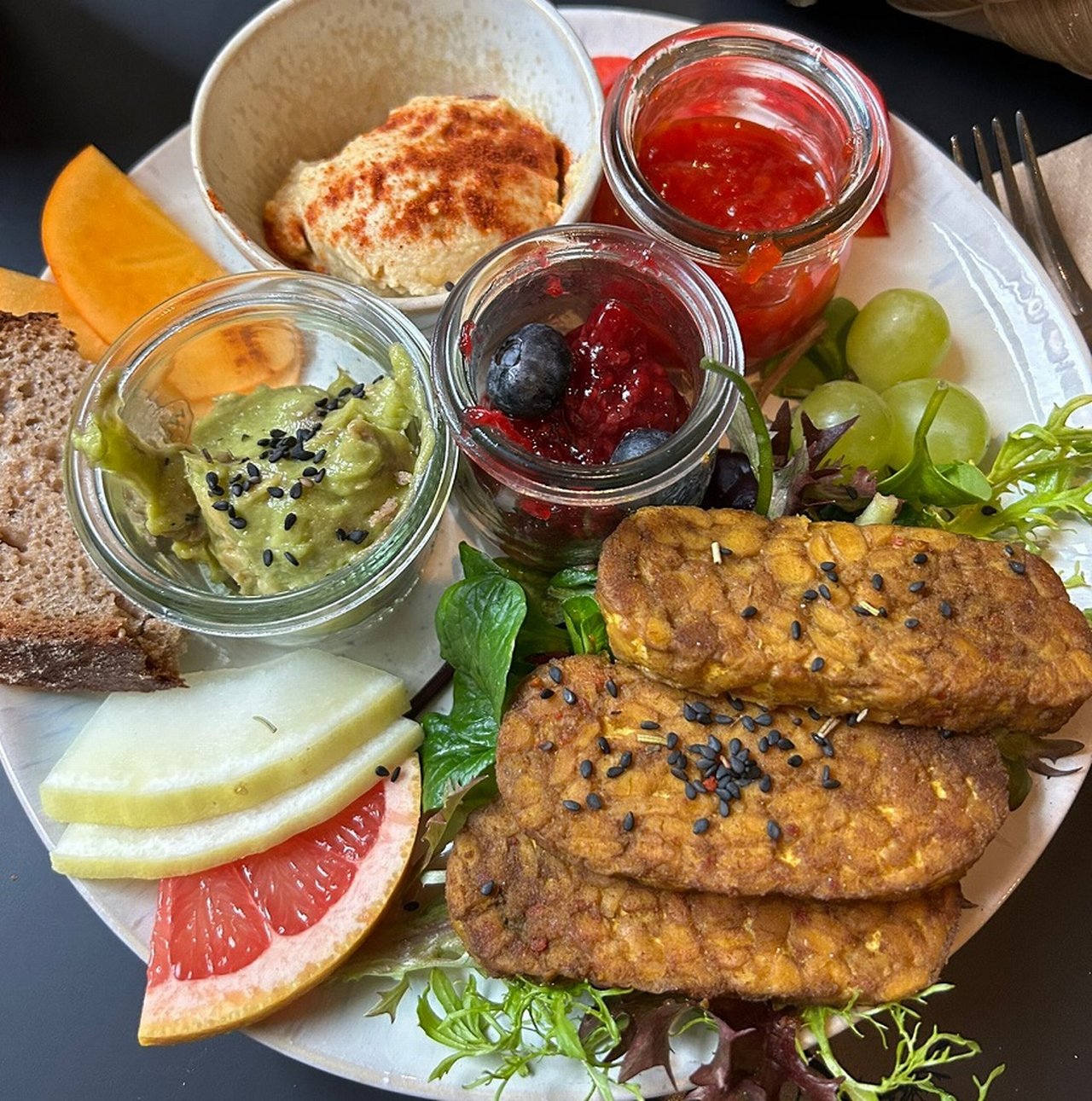
Moritz's insider tip: Tempeh!
Moritz V. from Anti-Financial Crime (AFC) in Frankfurt believes that the future can only be vegan. "I don't want animals to suffer so that I can eat," he says, and with all the substitutes on offer, he doesn’t feel like he misses out on anything.
One of Moritz's favourites is tempeh. “It’s the ideal meat substitute and comes in many savoury flavors," he says. Another tip from him is how close fried oyster mushrooms come to the taste of fried chicken. The preparation is a bit more complex, "but all the more delicious!", says Moritz.
He also has a recommendation for those who like to cook quick and uncomplicated meals: "A simple vegetable pan always goes down well." He adds soy granules, onions, garlic, peppers, bamboo shoots and some chili powder, and eats it with rice or noodles. And on days when it's okay to be unhealthy, he goes for vegan ice cream from Ben & Jerry's or plant-based chicken from Burger King, which he thinks is just as delicious as the real thing but he knows is completely cruelty-free.
Vegan food is more versatile than anything I've ever eaten
Fasting for better blood works
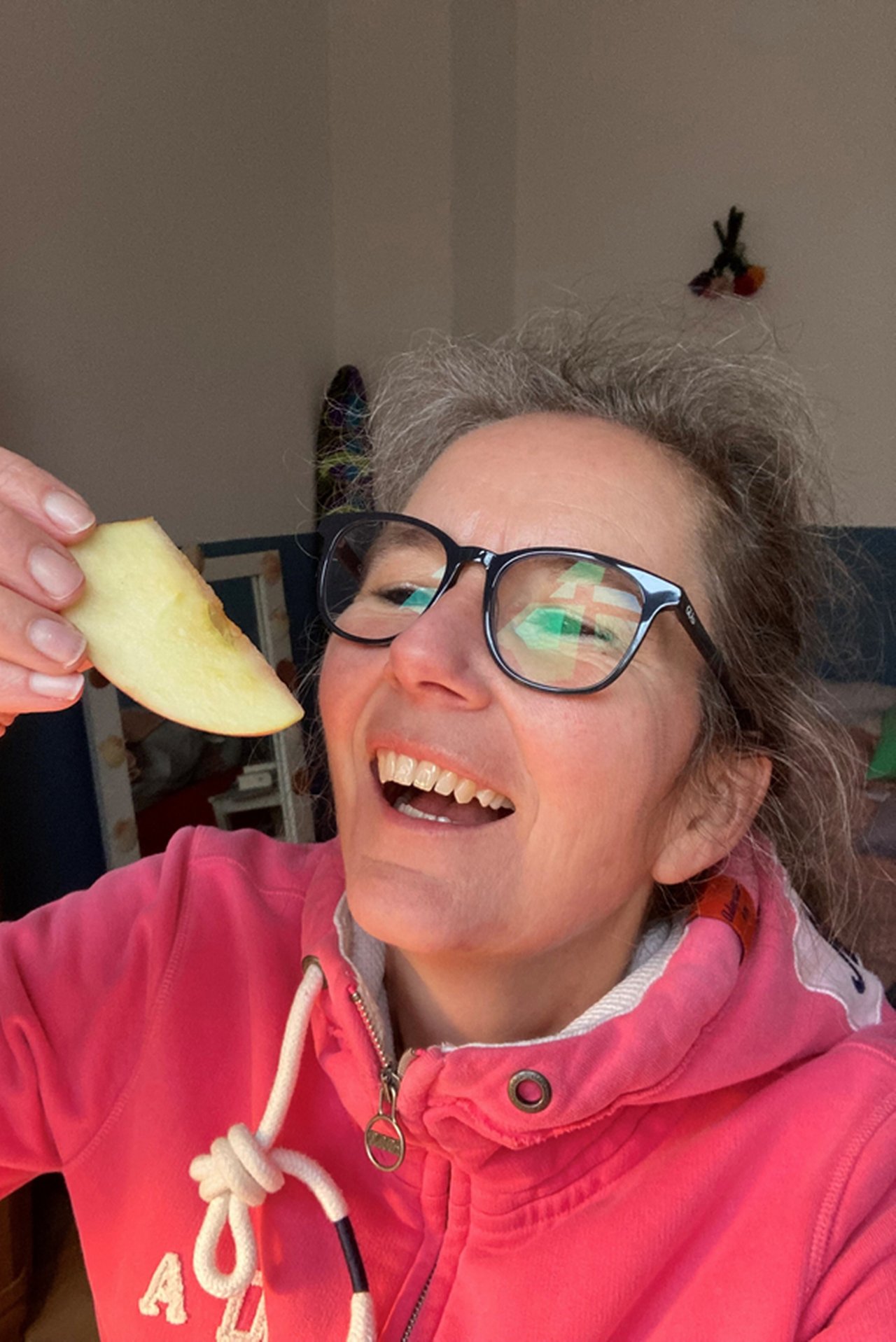
When Nicola ends her fast, she starts with lighter meals
Sometimes the body needs a break from daily eating habits in order to better regenerate. Many of our employees said they partake in fasting in one form or another.
Nicola Gill, for example, wouldn’t want to miss it. Once a year she takes time for a ten-day therapeutic fast. "Afterwards I feel great and eat more consciously – at least for a while."
For Andrew Fleming from AFC in London, his reason for fasting is more of an existential one. Living with cancer, Andrew needs to eat the kind of things that support his body as best as possible in the phases between treatments.
So he drinks vitamin-rich juices and adds salsas and pickled cucumbers to his food.
He started fasting last year when his blood test results had deteriorated despite his healthy diet. He usually starts fasting on Sunday evenings and, depending on his mood, starts eating again by Wednesday evening at the earliest.
In exceptional cases, he treats himself to a spoonful of miso paste with inulin; coffee or water are allowed.
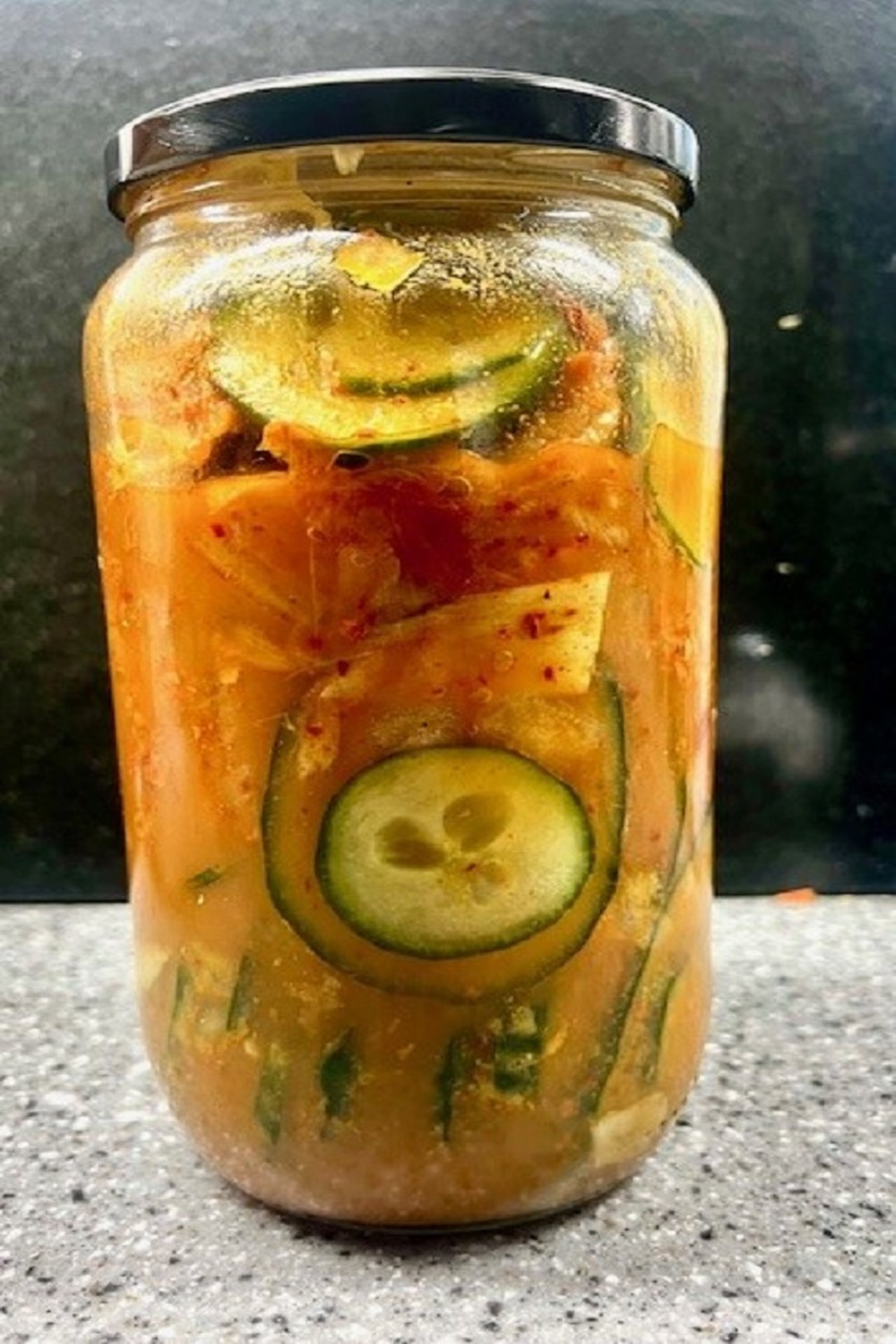
When Andrew is not fasting, he likes to prepare cucumber mixtures
Nothing is out of bounds, we should just practice moderation.
The goal is to put as little strain on his body as possible and to support his immune system. On the remaining days of the week, he focuses on eating a balanced, plant-based diet with very little sugar. His blood works improved very quickly. Andrew's conclusion: "For me it is clear: less is more." But he also says: "Nothing is out of bounds, we should just practice moderation."

Conscious nutrition among employees
How and what do you eat? We asked our employees and were surprised by the many exciting answers – from small changes to conscious decisions for plant-based or gluten-free diets. The answers show: Nutrition is something very individual and personal for everyone. Take a look!
This page was published in June 2025.

Iclal Hamarat
… is passionate about how food connects identity, culture and everyday life. She is fascinated by how people around the world express their values through nutrition: between tradition, enjoyment and individuality.
Recommended content
Entrepreneurial Success | Short & Sweet
Tik Tok made me do it TikTok made me do it
Five food trends not as good for the planet as you might think: Social media influences food trends that often lead to challenges for local communities and ecosystems.
Tik Tok made me do it Three ways to enjoy responsiblyEntrepreneurial Success | Crisp & Short
Banking on nutrition – catering through the ages Banking on nutrition – catering through the ages
For over 130 years, Deutsche Bank has known that a good, healthy meal makes for more productive, fitter employees. Read on to explore how the bank’s canteens have evolved.
Entrepreneurial Success | Photo Story
Leading the way with regenerative agriculture Leading the way with regenerative agriculture
Instead of waiting to see how climate change and species extinction affect its own production, the medium-sized company Schwartauer Werke started early to produce more sustainably.

